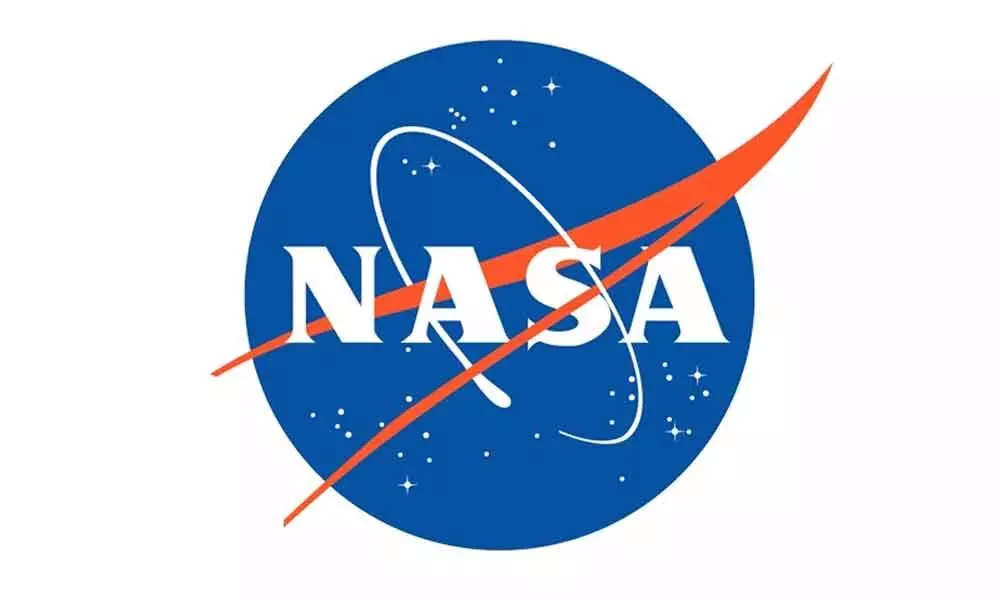Live
- UpStudy: The Smart Solution for Homework Hassles
- Actress Rithika and models inaugurate Sutraa Lifestyle Exhibition
- Loud campaign
- Faculty students celebrated english literature day in Government Degree College
- Huge fire accident.. Shops of street vendors burnt in the fire
- Pawan Kalyan promises to protect the coastal area from sea erosion
- EC Transfers Two Senior IPS Officers in AP ahead of Elections
- DMK analysis predicts victory for INDIA bloc in TN but concedes gains for BJP and NDA too
- India showcasing innovative technologies at World Energy Congress
- IPL 2024: Mitchell comes in for Ravindra as Lucknow opt to bowl first against Chennai
Just In

NASA’s functioning, inscrutable
NASA shocked everyone on April 16 when it selected Elon Musk’s SpaceX to build spacecraft that would land astronauts on the moon for the first time since the last Apollo mission.
NASA shocked everyone on April 16 when it selected Elon Musk's SpaceX to build spacecraft that would land astronauts on the moon for the first time since the last Apollo mission. NASA had in fact opted for three companies for the contract for this stage. The award to SpaceX for the "human landing system" (HLS) marked another major victory for the hard-charging company that zooms it to the top of the United States' aerospace companies.
This also means that SpaceX is one of the space agency's most trusted partners. In winning the $2.9 billion contract, SpaceX beat out Jeff Bezos's Blue Origin, which had formed what it called a "national team" by partnering with aerospace giants Lockheed Martin, Northrop Grumman and Draper. SpaceX also won over Dynetics, a defence contractor based in Huntsville, Alabama. In other major programs, NASA has chosen multiple providers to foster competition and to ensure it has redundancy in case one can't deliver. But when it came to revisiting the moon, NASA placed its trust entirely in SpaceX. But, why did NASA do it? It sounds insane.
But the HLS described the contract as "NASA's partnership with SpaceX to help achieve the Artemis mission and look forward to continuing our work toward landing astronauts on the moon, to prepare for the next giant leap towards Mars." The Artemis programme is a US government-funded international human spaceflight programme that has the goal of landing the first woman and the next man on the Moon, specifically at the lunar south pole region, by 2024.
The programme is carried out predominantly by NASA, U.S. commercial spaceflight companies contracted by NASA, and international partners including the European Space Agency (ESA), the Japan Aerospace Exploration Agency (JAXA), Canadian Space Agency (CSA), the Italian Space Agency (ASI), the Australian Space Agency (ASA), the UK Space Agency (UKSA), the United Arab Emirates Space Agency (UAESA), the State Space Agency of Ukraine, and the Brazilian Space Agency (AEB).
NASA is leading the programme but expects international partnerships to play a key role. Long-term goals include establishing an expedition team and a sustainable presence on the Moon, laying the foundation for private companies to build a lunar economy, and eventually sending humans to Mars.
This could be called a truly international effort of the world to explore and conquer the outer world to understand it better. In December 2017, President Donald Trump signed Space Policy Directive 1, authorising the lunar campaign. Artemis draws upon ongoing spacecraft programmes including Orion, the Gateway, and Commercial Lunar Payload Services, and adds an undeveloped crewed lander. The Space Launch System will serve as the primary launch vehicle for Orion, while commercial launch vehicles are planned for use to launch various other elements of the campaign.
NASA requested US$1.6 billion in additional funding for Artemis for fiscal year 2020, while the Senate Appropriations Committee requested from NASA a five-year budget profile which is needed for evaluation and approval by Congress. In February 2021, the Biden Administration endorsed the Artemis programme. With its Artemis programme, NASA aims to land the first woman and the first person of colour to land on the moon. Here is the difference this time around. NASA wants to return to the moon in a sustainable way.

© 2024 Hyderabad Media House Limited/The Hans India. All rights reserved. Powered by hocalwire.com







